Whether you’re a first-time diamond buyer or expanding your collection, selecting the perfect diamond can be a daunting task. While the 4C’s (Cut, Color, Clarity, and Carat) are essential considerations, the choice of diamond setting is equally significant.
So, you may be wondering: What are the different types of diamond settings available?
Diamond settings refer to various techniques used to secure and showcase diamonds, each offering a distinct aesthetic. For instance, a tension setting creates a unique floating appearance, while a prong setting is a timeless choice that maximizes the diamond’s sparkle.
If you’re unsure about selecting the ideal setting style for your diamond jewelry, this article aims to provide clarity and help you make an informed decision.
Here are some of the most popular diamond settings:
- Prong setting
- Pavé setting
- Channel setting
- Bezel setting
- Cathedral setting
- Tension setting
- Bar setting
- Halo setting
- Tiffany setting
- Flush setting
- Cluster setting
- Three-stone setting
It’s important to note that the diamond’s cut style will also influence the suitable setting options. In the following sections, you’ll find comprehensive information about each setting style, including their strengths and weaknesses.
DESIGN YOUR OWN ENGAGEMENT RING: START WITH A SETTING OR START WITH A DIAMOND. IT’S REALLY UP TO YOU!
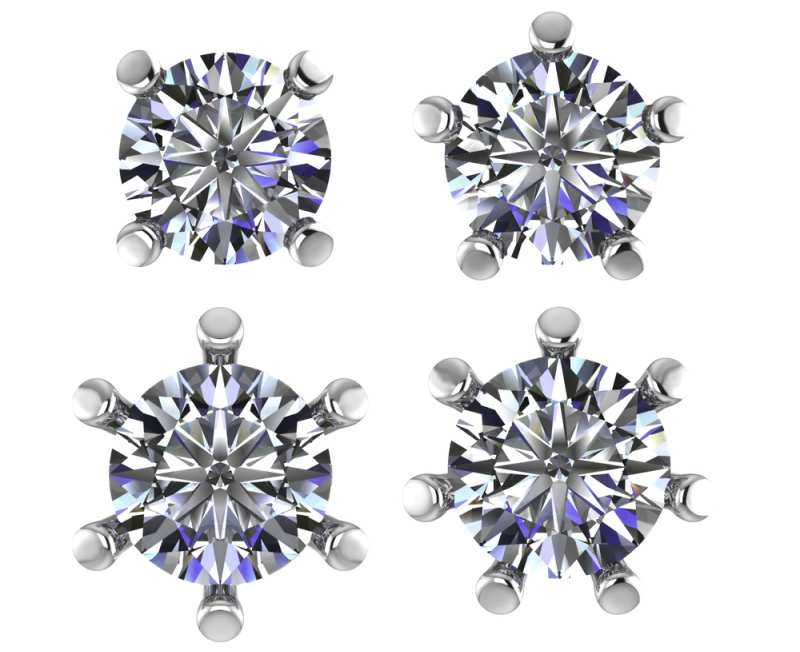
1. The Prong Setting
The prong setting, also known as the claw setting, is renowned as the most popular and classic choice among diamond settings. This setting holds the diamond with minimal metal, allowing more of the gem to be visible and enhancing its brilliance.
Prong settings come in various shapes, including pointed, flat, rounded, or V-shaped. Typically, they feature either 4 or 6 prongs. A 4-prong setting offers greater visibility of the diamond, while a 6-prong setting provides added security.
Pros and Cons of Prong Setting
The prong setting offers several advantages. It elevates the diamond, creating an exclusive and captivating appearance. Moreover, it allows ample light to enter the diamond, enhancing its brilliance. The prong setting exudes a timeless and elegant aesthetic and is easy to maintain and clean.
However, there are a few drawbacks to consider. Since the diamond is not fully surrounded by metal, it may be more susceptible to dirt and debris accumulation. Additionally, the prongs can potentially catch on clothing, hair, or other materials. It is recommended to have the prongs checked every couple of years to ensure the diamond remains securely held, as they can loosen over time with regular wear.
Overall, the prong setting offers a beautiful and versatile option, but it’s important to be mindful of its maintenance requirements and occasional prong inspections to ensure the diamond’s security.
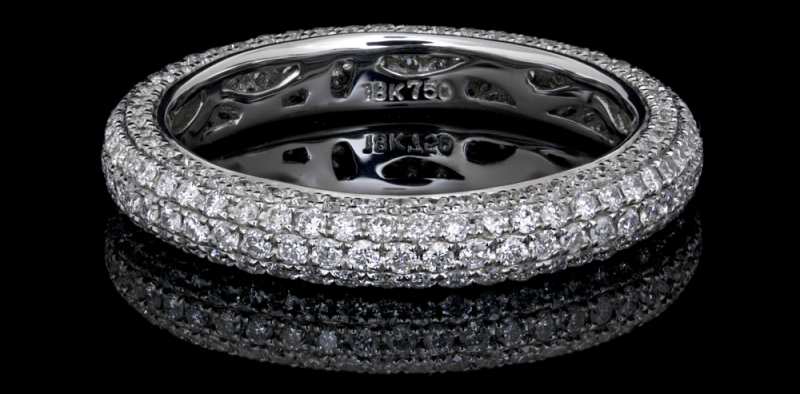
2. The Pavé Setting
The term “pavé” is derived from the French word meaning “to pave,” suggesting a surface paved with diamonds. In this setting, smaller diamonds are placed close together with minimal visibility of the tiny metal beads that hold them in place, creating a continuous sparkle effect.
The pavé setting is also referred to as a bead setting and may be called a “micro-pavé setting” when using particularly small stones.
Pros and Cons of a Pavé Setting
The pavé setting offers several advantages. It showcases the center gemstone and enhances overall brilliance by incorporating side stones. It can be used as a scattering of gems or as an accent to a central rock, creating a stunning visual effect. Additionally, pavé settings are available in various styles, including vintage and contemporary designs.
However, there are a few considerations to keep in mind. Resizing can be challenging or even impossible if the jewelry is pavé set around the entire band. It is important to consult with a professional jeweler regarding the feasibility of resizing.

3. The Channel Setting
The channel setting, also known as the rail setting, involves setting smaller diamonds in a straight line within the precious metal. This creates an elegant and refined look that appeals to both men and women.
Pros and Cons of a Channel Setting
The channel setting offers several advantages. Firstly, it provides secure and reliable protection for the diamonds, safeguarding them against external factors. Additionally, the side stones in the channel setting enhance the overall brilliance of the jewelry piece. This setting style also complements well with other types of diamond settings. Moreover, jewelry with a channel setting is less likely to snag on clothing, hair, or other materials.
However, there are a few considerations to keep in mind. The rows in a channel setting can trap dirt, making the diamonds require more effort to clean. Additionally, repairing and resizing jewelry with a channel setting can be challenging. Furthermore, compared to a prong setting, the channel setting may slightly conceal the diamonds, affecting their visibility.
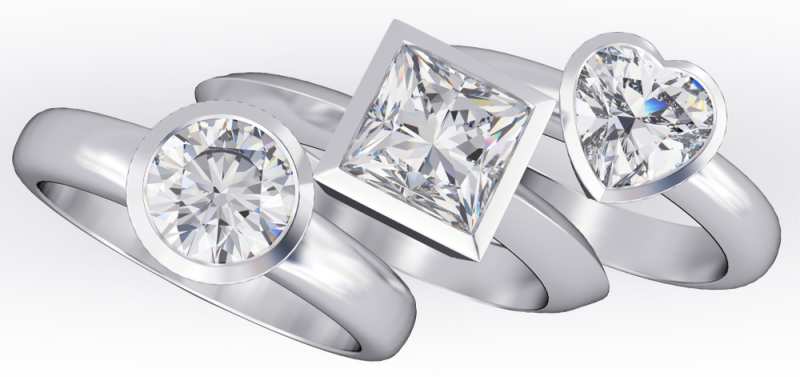
4. The Bezel Setting
The bezel setting is considered one of the most secure and popular diamond settings. It involves encircling the diamond with a thin metal rim, providing excellent protection.
There are two types of bezel settings: the full-case setting, which completely surrounds the diamond, and the half-case setting, which leaves the sides of the diamond open.
Pros and Cons of a Bezel Setting
One of the major advantages of a bezel diamond setting is its exceptional protection against external factors, making it an ideal choice for individuals with active lifestyles. It offers an elegant and timeless appearance and is easy to clean and maintain.
However, there are a few considerations to bear in mind. Compared to a prong setting, a bezel setting covers more of the diamond, potentially reducing its visibility. Additionally, it may slightly diminish the diamond’s brilliance and ability to reflect light.
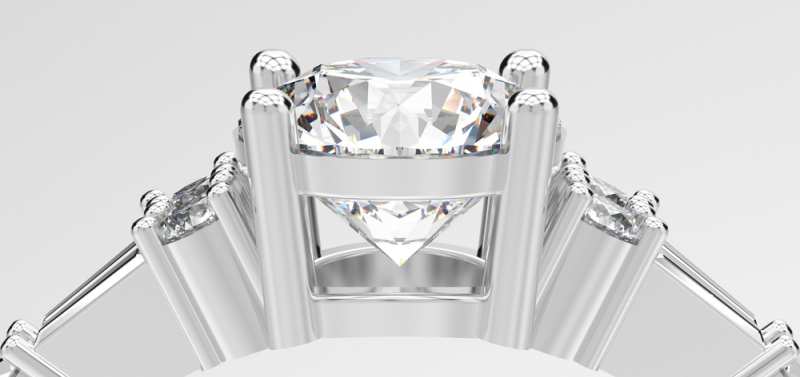
5. The Cathedral Setting
The cathedral setting involves using metal arches to hold the diamond in place, creating a towering effect that makes the diamond stand out.
The arches in a cathedral setting can be designed with bezels, prongs, or tension settings. What matters most is how the diamond is mounted with the arches, rather than the specific method of holding the stone.
Pros and Cons of a Cathedral Setting
One of the advantages of a cathedral setting is that it creates the illusion of a larger and more prominent center stone. The setting itself offers a breathtaking design and ensures the center stone is securely held.
However, there are a few drawbacks to consider. The cathedral setting is more prone to catching on clothing, furniture, and hair, making it less suitable for everyday wear. Additionally, this setting style requires more time and effort for cleaning and maintenance.
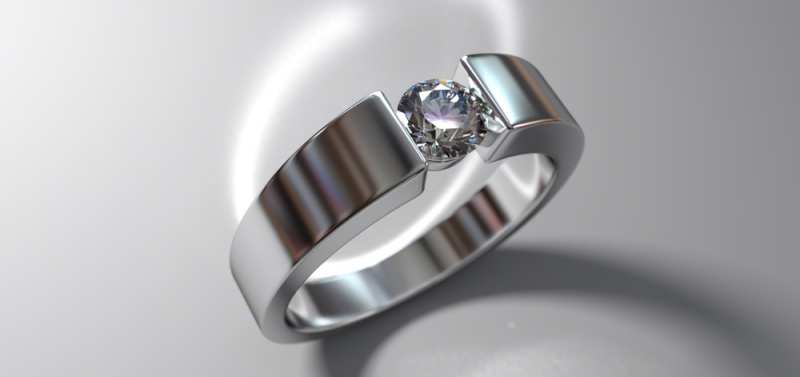
6. The Tension Setting
The tension setting takes the prize for the most original diamond setting.
Its name comes from the illusion that the diamond is held in place solely by the tension of the ring band, giving it a floating appearance.
The tension setting is a complex style to manufacture as the jeweler precisely calibrates the dimensions of the diamond using lasers. To ensure greater security, a bezel or prong setting is usually applied underneath or on the side of the diamond.
Pros and Cons of a Tension Setting
The tension setting maximizes the capture and reflection of light, resulting in a stunning and unique look. It also requires less time for cleaning and maintenance.
However, due to its minimal protection, there is a higher risk of losing the diamond, and resizing or repairing the setting can be expensive.
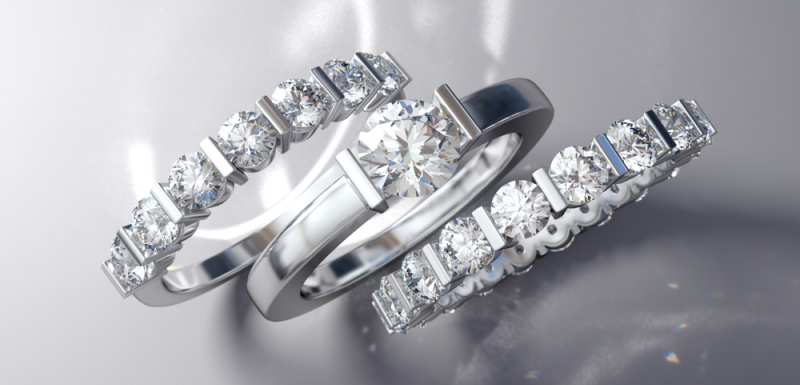
7. The Bar Setting
The bar setting is a more secure variation of the channel setting.
In this style, diamonds are placed individually between two parallel metal bars, exposing the diamond on two sides, whereas the channel setting encloses the stone on all sides.
The bar setting can be used to accessorize jewelry with a center stone or as a stand-alone feature. It is versatile and suitable for various types of jewelry, including eternity rings or wedding bands.
Pros and Cons of a Bar Setting
The relatively flat outer surface of jewelry with a bar setting provides enhanced security. The gemstones are more exposed, allowing for increased sparkle. Additionally, diamonds are highly visible due to the minimal amount of metal compared to a channel setting.
However, one drawback is the potential higher price associated with this setting style. Resizing can also be challenging, and there is a slightly higher risk of the diamonds chipping due to their exposed nature.
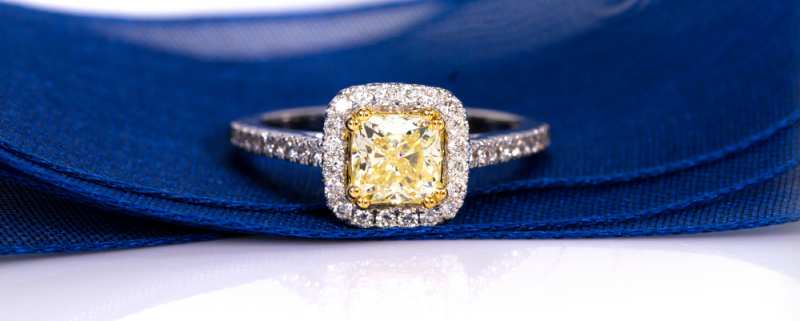
8. The Halo Setting
The halo setting features tiny diamonds arranged in a concentric shape, such as a circle or square, around a center stone. It often includes pavé diamonds as small accent stones, enhancing the overall brilliance of the jewelry piece.
This setting style creates a visually striking effect, making the center gemstone appear more prominent. It also offers versatility, as the central diamond can be easily replaced with a colored gemstone, like sapphire, while maintaining the halo setting.
Pros and Cons of a Halo Setting
The halo setting provides secure support for the central diamond and can visually enhance the appearance of a smaller center stone. It is compatible with various diamond shapes, allowing for customization.
One potential drawback of this setting type is the possibility of small side stones loosening over time with regular wear. Additionally, resizing a halo-set ring can be more complex due to the intricate arrangement of the accent diamonds.
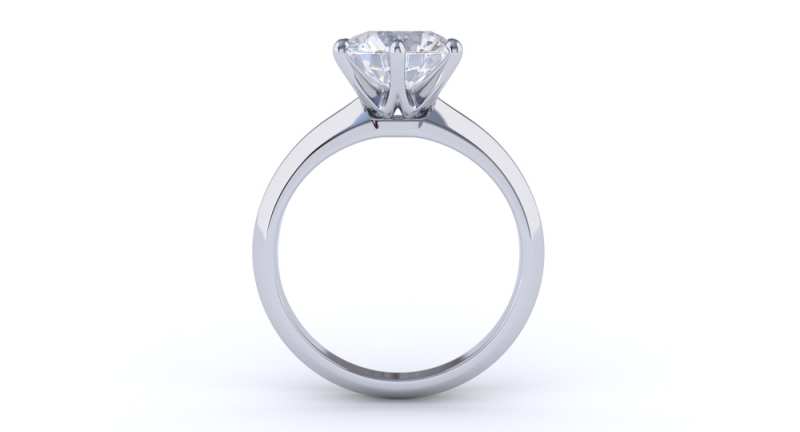
9. The Tiffany Setting
In 1886, Tiffany and Co. introduced the trademarked Tiffany setting, featuring a round diamond held by six prongs. This iconic design elevates the diamond above the band, allowing it to capture attention and sparkle.
While you may come across similar settings in other jewelry shops, they can never replicate the exact Tiffany setting due to the trademarked prong design owned by Tiffany & Co.
Pros and Cons of a Tiffany Setting
The Tiffany setting offers a timeless and elegant look that remains fashionable throughout the years. It enhances the brilliance and reflects light beautifully, showcasing the diamond’s radiance. Additionally, it is easy to clean and maintain.
However, one potential drawback of this setting style is the possibility of the prongs snagging on clothing or other materials, particularly if the diamond is set higher. Over time, there is also a chance of the diamonds becoming loose with regular wear.
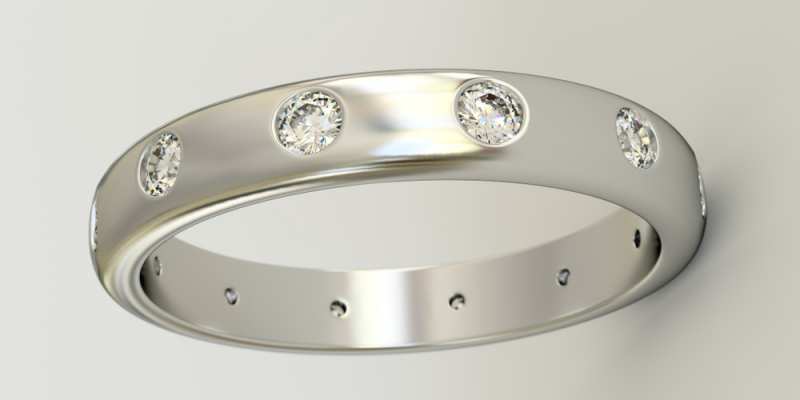
10. The Flush Setting
Flush diamond settings, also known as “gypsy settings,” involve placing the gemstone into a drilled hole that aligns it flush with the surface of the band. The jeweler then hammers the metal around the gem to secure it in place.
It’s important to note that this setting style may not be suitable for softer stones, as the hammering process could potentially cause damage. Flush settings are commonly chosen for wedding bands, particularly for men.
Pros and Cons of a Flush Setting
The flush diamond setting is highly durable and protective, similar to a bezel setting. It offers excellent practicality, making it a popular choice for those who engage in hands-on activities or crafts.
Additionally, a flush setting provides a beautiful, simplistic, and robust aesthetic.
However, one of the main drawbacks of a flush diamond setting is that it reduces the visibility of the gemstone. This can result in decreased brilliance and fire, making the diamond less eye-catching compared to settings that allow for more light interaction.
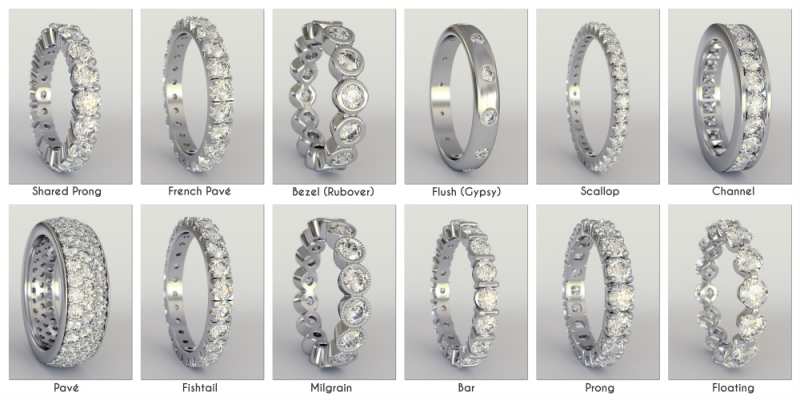
Conclusion
When it comes to selecting diamond jewelry, it’s important to consider every aspect, including the type of setting that holds the diamonds in place with your chosen precious metal.
So, which diamond setting styles are most suitable for you?
If you appreciate timeless simplicity and elegance, light and delicate settings are ideal. Options such as the prong setting or bezel setting would be perfect for your taste.
On the other hand, if you prefer a more extravagant and eye-catching look, with plenty of stones and sparkle, settings like pavé or halo settings would be a great fit. These settings are designed for those who love the abundance of diamonds and dazzling accents.
For individuals with an active lifestyle or those engaged in manual work, durability is crucial. In such cases, the channel setting, known for its sturdiness, would be a suitable choice.
Consider your personal style, preferences, and lifestyle when selecting the diamond setting that best suits you.


